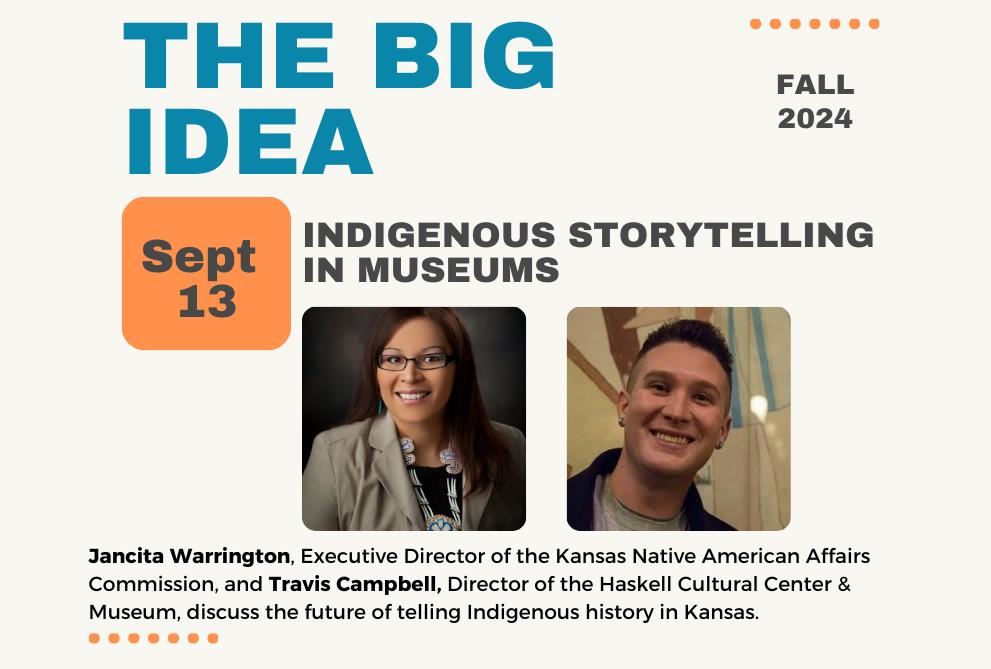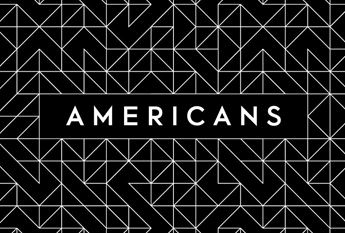

Big Idea: Indigenous Storytelling in Museums
September 9, 2024
“Storytelling of history has always been a part of Native culture, so sharing our stories in museums is exciting,” said Jancita Warrington, Menominee, Potawatomi, and Ho-Chunk Nations and Executive Director of the Kansas Native American Affairs Office. “But these cultural items require collaborative lines of communication and partnerships. That’s crucial.”
Today, building relationships with tribes is the foundation of Indigenous storytelling in museums. “First and foremost, museums must reach out to the tribes to see how they want their stories told,” said Travis Campbell, Director of the Haskell Cultural Center and Museum in Lawrence and a member of the Cherokee Nation of Oklahoma, Choctaw Nation of Oklahoma, and Delaware Tribe of Indians.
Building relationships represents an important new approach by the museum community and one that begins with trust. Who tells the stories of Indigenous history?
“Many of our cultural items were not meant to be removed,” Warrington explains. “They were meant to be used and honored. They have a living spirit.” And this is where a new approach to storytelling can take shape. Warrington is excited by new opportunities provided by technology that can give deeper explanations and more understanding. Including Indigenous voices in a museum’s exhibits and programming provides a visitor experience that goes beyond archaeological finds.
Warrington acknowledges that finding stories and histories that accurately reflect tribal cultures is hard work. “Our histories are often undocumented and lack primary sources. Many stories were interpreted by anthropologists who often did not capture or record with the same cultural perspectives.” She said that many art-making traditions have been lost through past removal strategies, such as in boarding schools where Native children were not allowed to practice their traditions. “This has made many pieces in museums forgotten or misunderstood.”
Campbell suggests that small museums begin thinking more expansively about how they portray their local history. “Start by exploring the story of how the artifact came to your museum. That can sometimes reveal its origins.” He also suggests contacting area tribes to determine affiliation and history. “It’s okay to ask questions,” he added.
Museum audiences also play a crucial role in Indigenous storytelling. Warrington and Campbell both encourage visiting with an open mind. “We can be critical when we hear something different than what we thought we knew,” Warrington said. Visiting local museums can be a great way for audiences to learn more and go beyond what they may have learned in high school.
“Every museum has a story, every community has a story,” she added. Together, “these communities make up this beautiful fabric of America that’s so diverse.”
On September 13, join Jancita Warrington, Executive Director of the Kansas Native American Affairs Commission, and Travis Campbell, Director of the Haskell Cultural Center & Museum, in conversation with Big Idea host Dr. Valerie Mendoza as they discuss the future of telling Indigenous history through museum best practices.
Online, Friday, September 13
Noon CT
Free, but registration is required. Register here.
Join the movement of Ideas
- VISIT the Haskell Cultural Center & Museum in Lawrence to experience the living trival materials, traditions, and cultural arts and learn about the story of Haskell's evolution from a government boarding school to today's accredited university.
- INVITE Haskell Professor Eric P. Anderson to your community to present his Speakers Bureau talk, "A History of the American Indian Boarding Schools."



